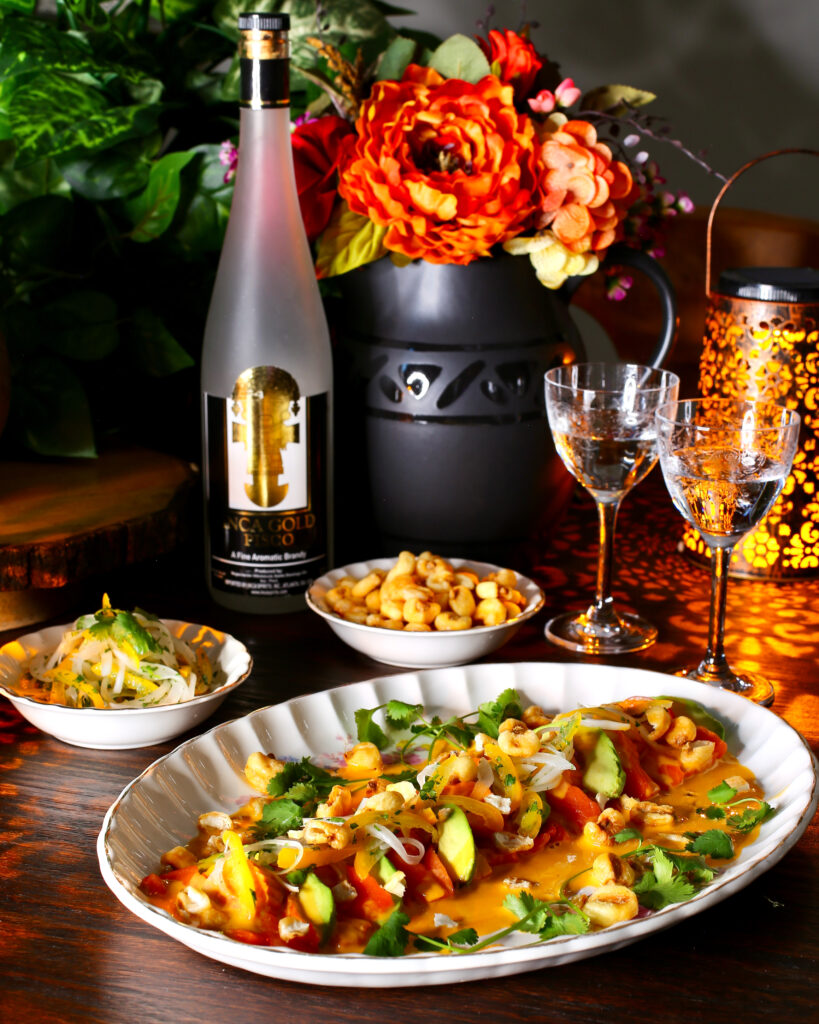
Tiradito de Salmón
Rocoto Chile Emulsion, Sweet Potato, Radish, Avocado
Cilantro, Corn Nuts, Pickled Manzano Chile with Onion
Often referred to as a cousin of ceviche, Peruvian Tiradito boasts a unique identity characterized by thinly sliced raw fish, arranged and adorned with a zesty marinade, and a myriad of flavorful toppings.
Here the dish showcases Wild Alaska King Salmon infused with a citrusy lime rocoto chile emulsion. It is a colorful symphony of freshness and heat with creamy and crunchy notes.
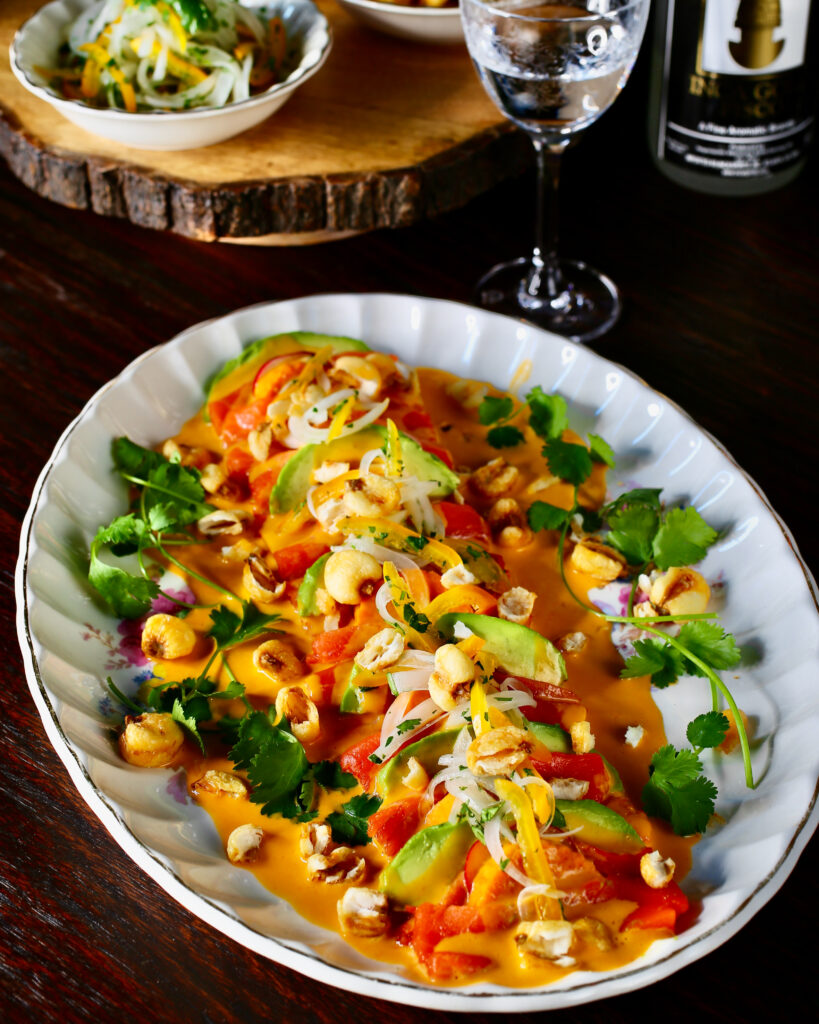
Receta de Tiradito de Salmón con Rocoto
Wild Alaska King Salmon
- sashimi quality king salmon fillet, this one was 9.5 oz.
Remove skin and pin bones from the salmon then slice sashimi style. Shingle salmon down the center of an oval platter. Refrigerate while preparing the other ingredients.
Sweet Potato
-
- medium sweet potato, long and slender if available
Prick potato all over with a fork. Wrap in a paper towel and microwave for about 7 minutes, turning over once, until tender. Let cool to room temperature. Slice into 1/2″ thick wheels. Then use a cooking cutter to make a circular slice of sweet potato out of each wheel, leaving the skin behind.

Pickled Manzano Chile with Onion
-
-
- 1 manzano chile, thinly sliced
- 1/2 white onion, thinly sliced
- lime juice
- sea salt
- cilantro, chopped
-
Toss chile and onion with lime juice. Season with salt. Refrigerate 30 minutes then toss with plenty cilantro.
Rocoto Emulsion
-
-
- 2 T. fruity olive oil
- 1 T. lime juice
- 1 T. rocoto paste
- sea salt to taste
-
Blend ingredients in a small container with an immersion blender.
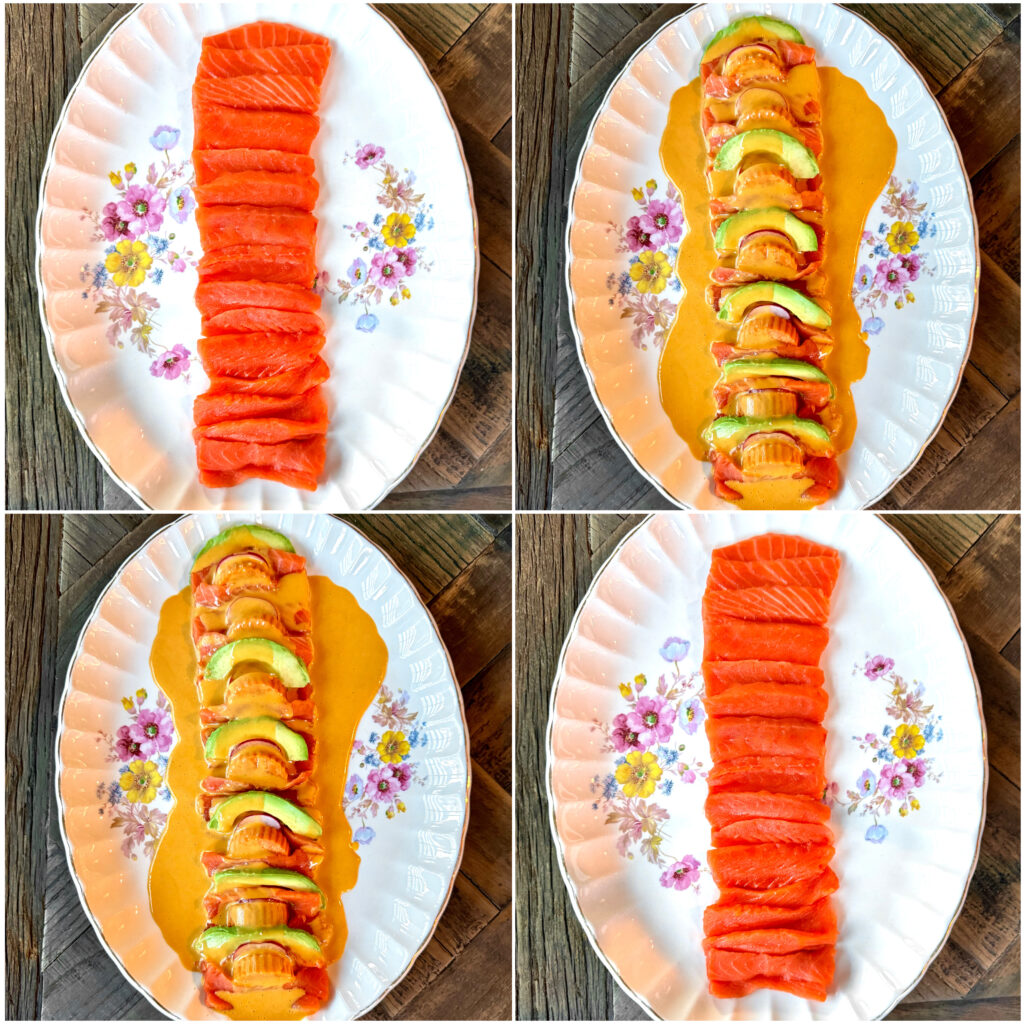
To Plate
-
-
- radish, thinly sliced
- avocado, sliced
- corn nuts aka peruvian inca corn snacks, partially crushed
- cilantro sprigs
- flaky salt
-
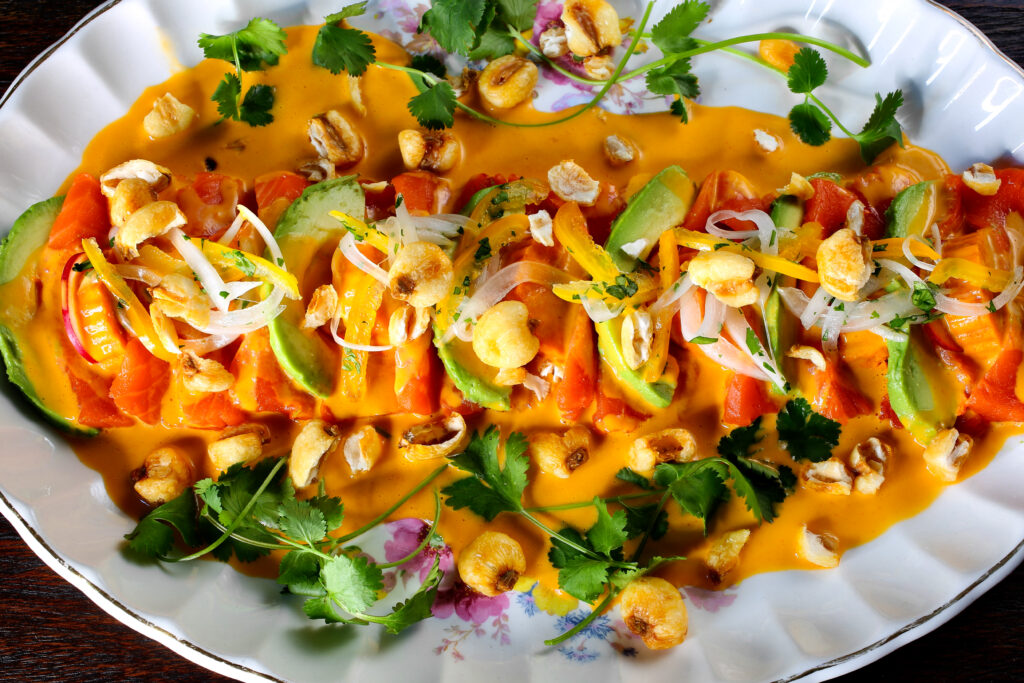
Arrange sweet potato coins, avocado and radish slices between the salmon slices. Pour rocoto emulsion over the top. Arrange pickled manzano with onion down the center. Garnish with corn nuts and cilantro sprigs. Finish with flaky salt. Serve extra pickled manzano and corn nuts on the side.
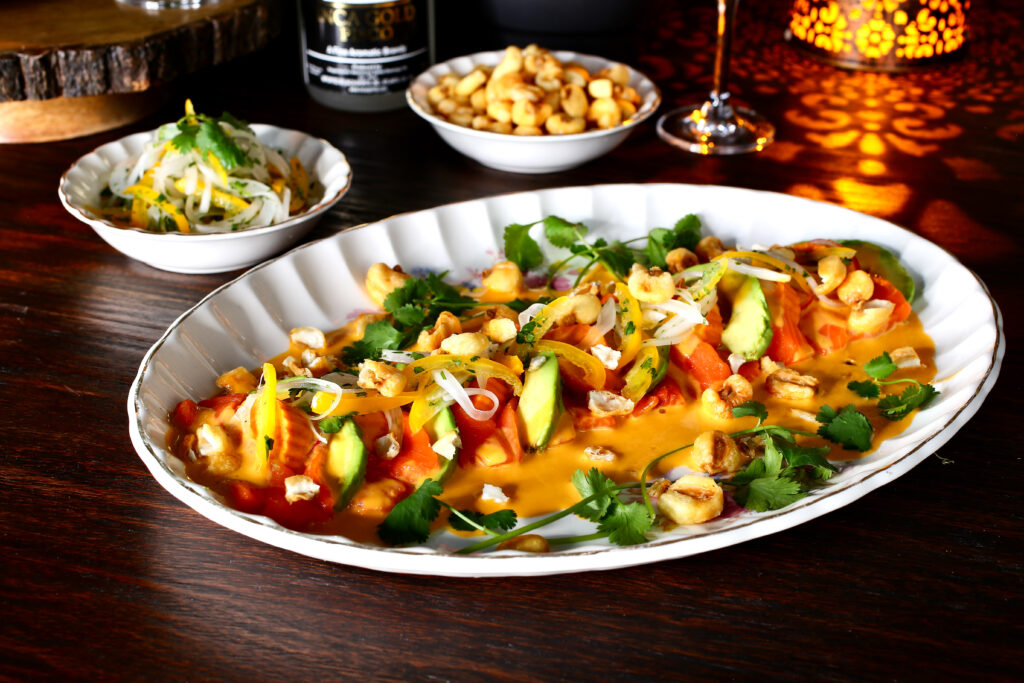
Rocoto and Manzano Chile Peppers

Pictured: A fresh Manzano grown in Mexico and a jar of Rocoto Paste from Peru.
Rocoto chile peppers are native to South America (particularly Peru and Bolivia) and generally have a pear shape. The skin ripens from green to dark red when mature. Rocoto chile peppers have a sweet and fruity, grassy flavor followed by a moderate to hot level of spice.
Manzano chile peppers are commonly grown in Mexico and generally have an apple shape. The skin ripens from light green, bright yellow, to orange when mature. Manzano chile peppers have a fruity, citrus-forward flavor followed by a mild to moderate level of heat, depending on maturity.
They both have a central cavity filled with many small, round and flat, black seeds.
It’s worth noting that both Rocoto and Manzano peppers belong to the same species, Capsicum pubescens. Despite their geographical and culinary differences, they share this common scientific classification.
Info from: Speciality Produce
Tasting The Foods of Peru 2001
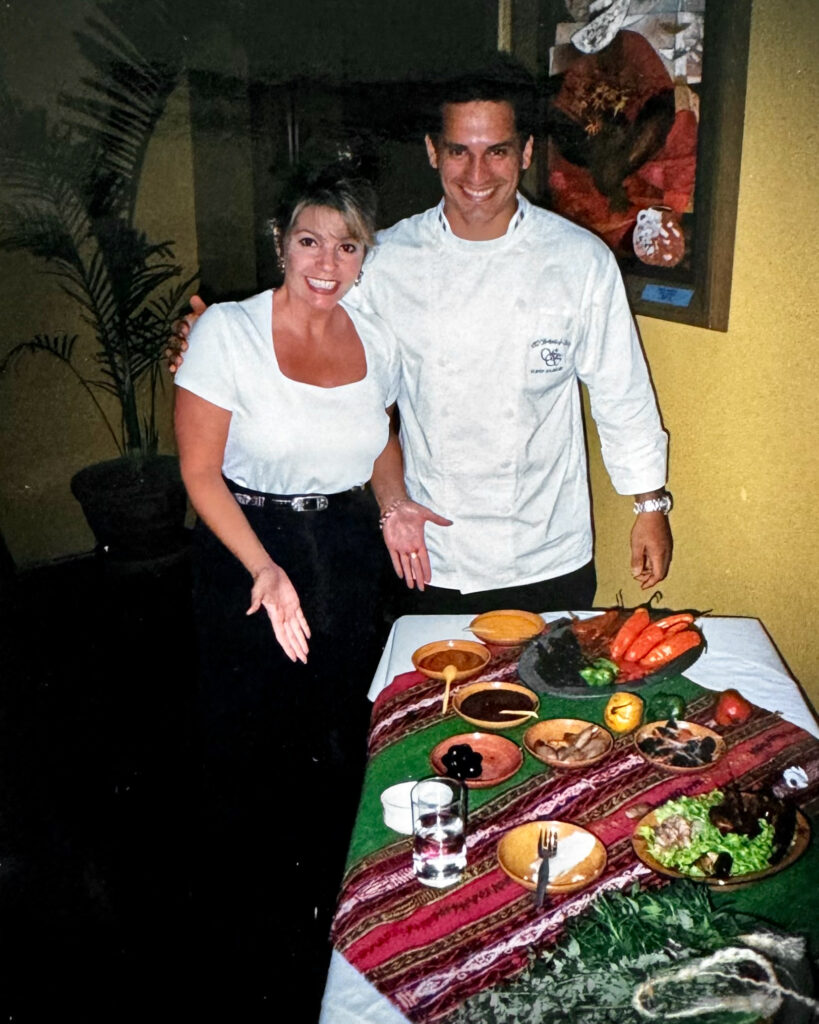 Twenty-three years ago in Lima with the chef, sampling the building-block flavors of Peruvian cuisine including the rocoto peppers. And a rare pic of food! How I wish we were taking more photos of our food back then as all our Peruvian meals were extraordinary. Particularly memorable was one salad of octopus with bacon and alfonso olives (olives pictured above) which I must re-create soon!
Twenty-three years ago in Lima with the chef, sampling the building-block flavors of Peruvian cuisine including the rocoto peppers. And a rare pic of food! How I wish we were taking more photos of our food back then as all our Peruvian meals were extraordinary. Particularly memorable was one salad of octopus with bacon and alfonso olives (olives pictured above) which I must re-create soon!
Pisco

Peruvian Pisco brandy, a grape-based spirit from the coastal valleys of Peru, is celebrated for its unique flavors and deep-rooted traditions. Crafted exclusively from eight designated grape varietals, including Quebranta and Torontel, Pisco offers a rich and complex character distinct from other brandies.
Pouring a moderate amount into a stemmed cocktail glass enhances the tasting experience. The spirit’s bouquet reveals floral, fruity, and herbal notes plus a smooth and velvety texture.
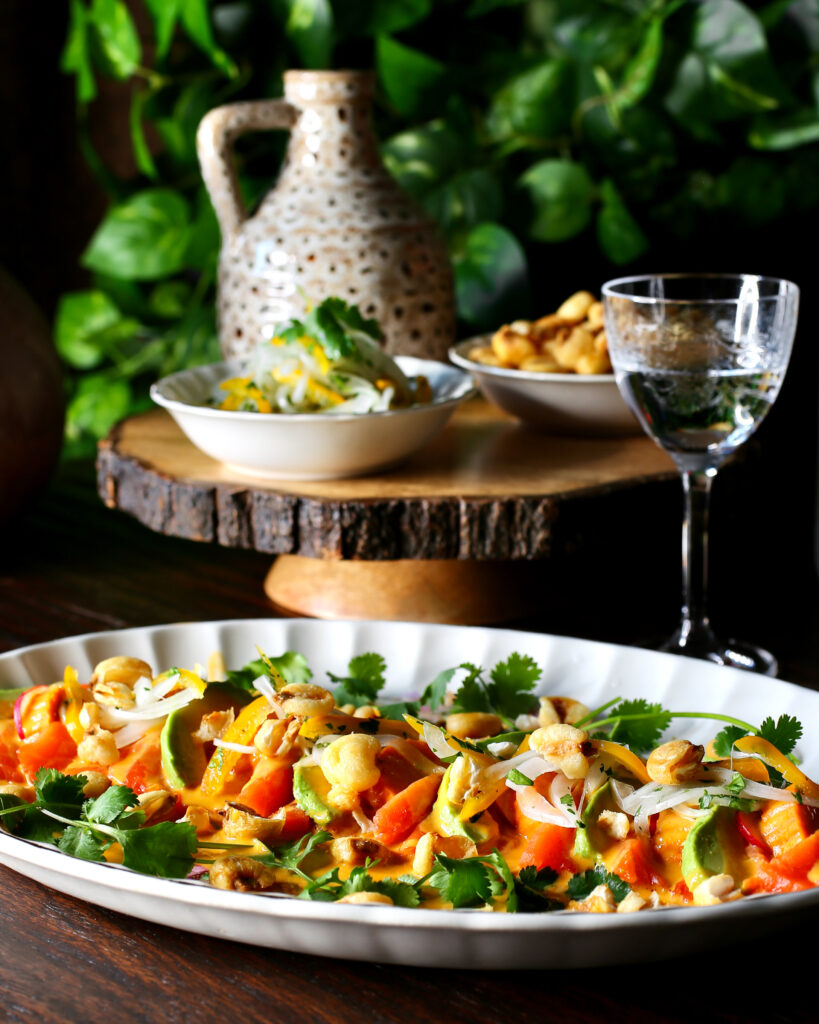
When pairing Pisco neat with tiradito, take a small sip of the spirit between bites. This approach allows appreciation of the evolving flavors of both the Pisco and the tiradito…

My mouth is watering reading this recipe. It has a lot of specialty ingredients that I would have to order. The presentation is spectacular.